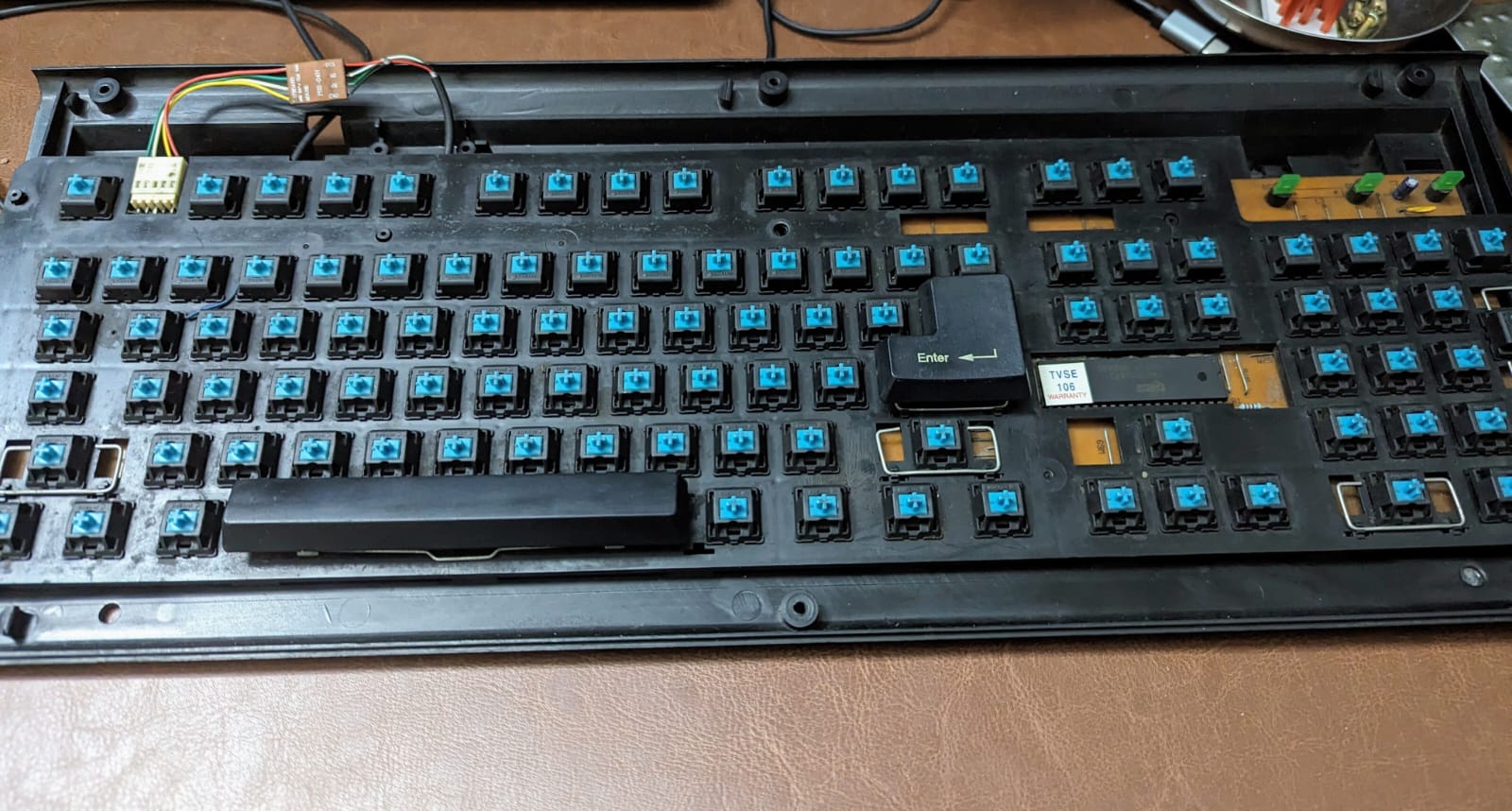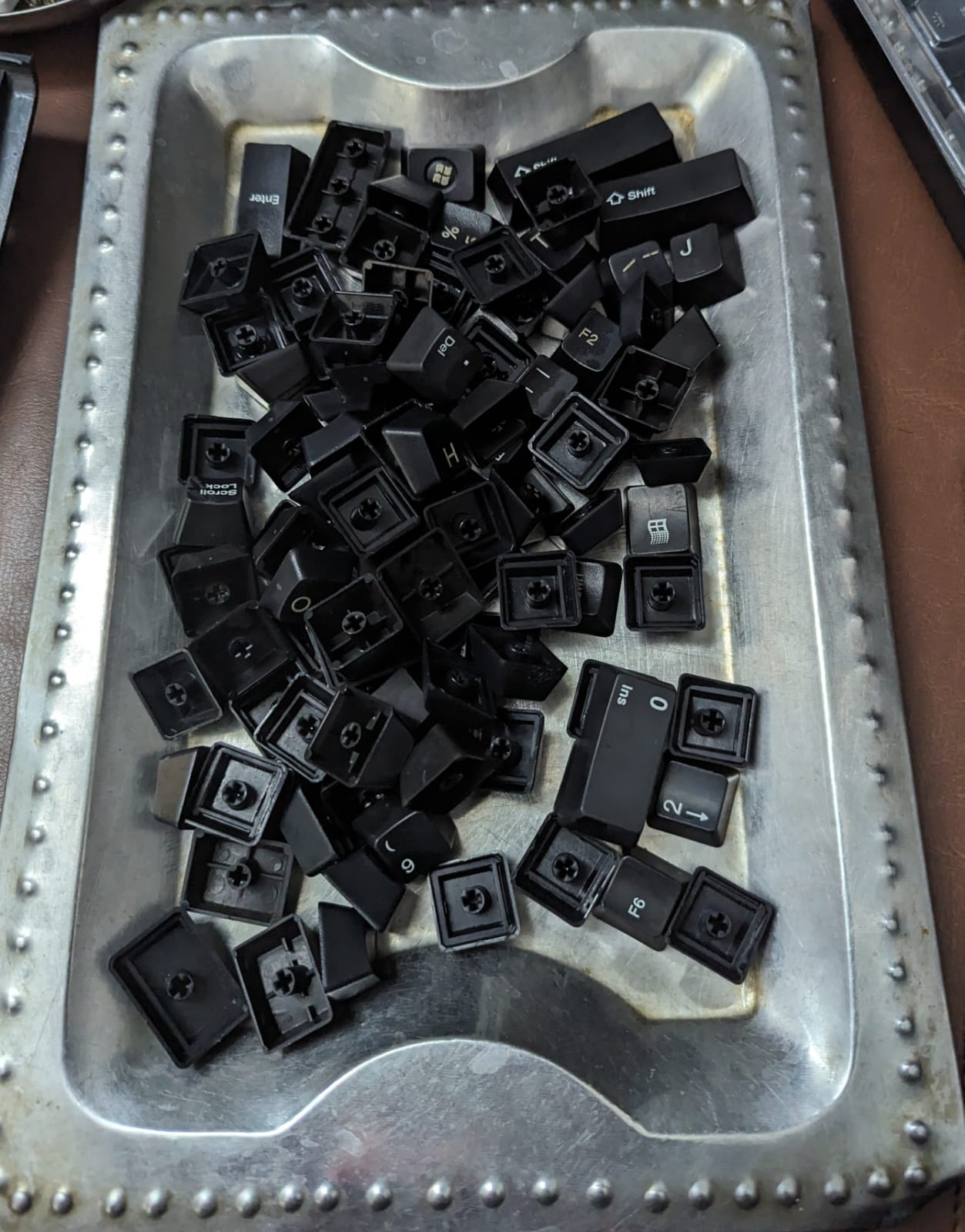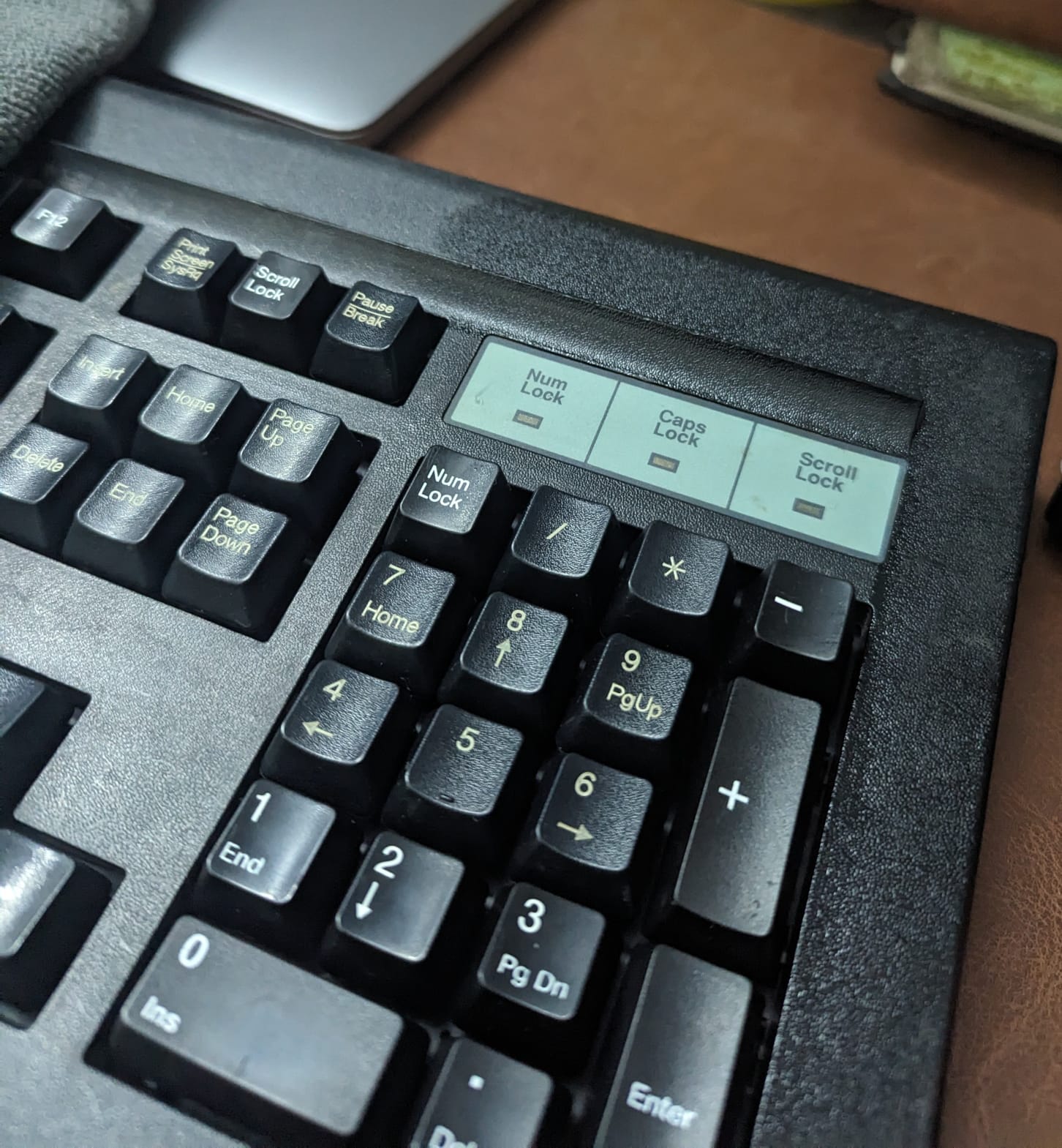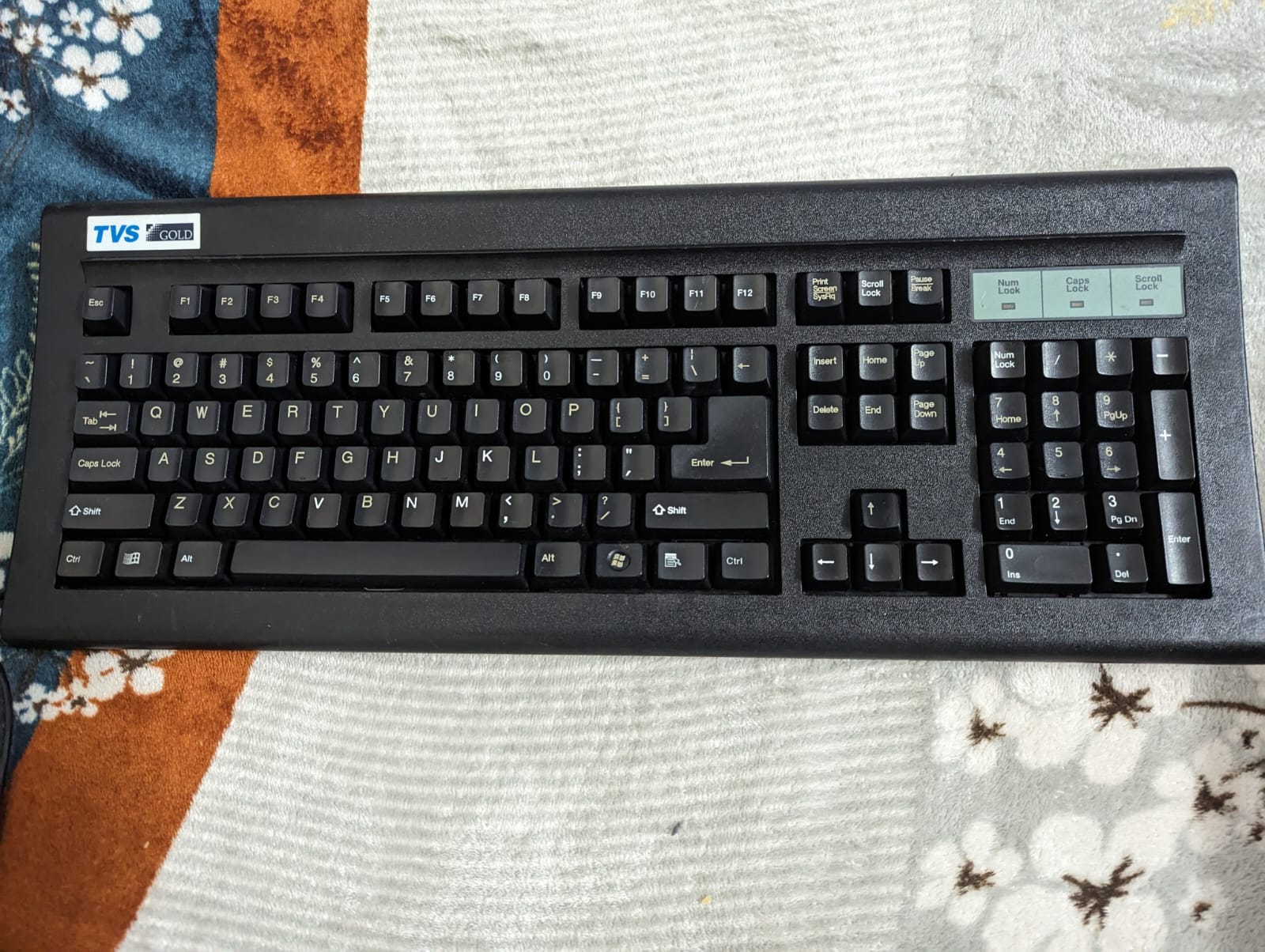I Resurrected a 12-Year-Old Keyboard, and It's Now My Daily Driver
My Keychron K8, a perfectly respectable modern mechanical keyboard, is currently serving as a very expensive dust cover. For the past three months, it’s been sitting in my office, completely ignored.
The culprit? A 12-year-old TVS Gold I unearthed from a forgotten box while shifting homes. I should have thrown it out. It was disgusting. But now, it’s the only keyboard I want to use.
The Archaeological Dig
Opening this thing up was less of a tech project and more of a hazmat situation. A decade of neglect had turned the inside into a fluffy graveyard of dust, grime, and things I don’t want to identify. It was crusty.

After a vigorous session with a brush and compressed air, I plugged it in. Nothing. Of course. I was ready to call it a day, but then I saw the connector pins. They were green with corrosion.
A bit of IPA, some creative rewiring, and a prayer later, I plugged it in again.
It worked. Every single key. This old tank was still kicking.
Decontamination Protocol
With the guts surprisingly functional, it was time to face the horror of the exterior. The plastic frame was a mottled, Jackson Pollock-esque mess of grey and black. It looked like it had been stored in a swamp.

This is where my weekend disappeared. I dismantled the entire keyboard. The board cleaned up nicely, but the keycaps were a special kind of hell.

I scrubbed every single keycap by hand. It was tedious, soul-crushing work. My fingers were raw. My spirit was nearly broken. But I was in too deep to stop.

Keyboard Heresy and Questionable Lubricants
The keys worked, but they felt awful—stiff, scratchy, and loud in all the wrong ways. They needed lube. On a modern board, I’d desolder the switches and do it properly. But this was a 12-year-old board I’d just barely coaxed back to life. My soldering skills are, let’s say, developing. I wasn’t about to risk its life.
So, I committed a cardinal sin in the eyes of keyboard purists. I grabbed a syringe and some Rubik’s cube lube I had lying around.

I can hear the gasps from here. But guess what? It worked beautifully. The keys are now buttery smooth, with a deep, satisfying “thock” that modern boards just can’t replicate.
The Car Detailing Trick
The frame was still a problem. It was clean, but the plastic was faded and sad. I’d seen people try all sorts of weird retro-brighting techniques, but I had a different idea. I reached for the ceramic wax I use on my car.

The result was genuinely shocking. The wax didn’t just shine it up; it restored the deep, rich black of the plastic. It looks almost new.
The Aftermath
After a weekend of grime, questionable hacks, and a lot of patience, the TVS Gold was reborn. It’s been my daily driver for three months, and I’m not looking back. It’s a joy to type on, and it gets more comments than any fancy gadget I own.

The Sound of Victory
The best part, though, is the sound. This keyboard has the original blue switches, and they are magnificent. They have a crisp, clicky, tactile feedback that’s been lost in most modern keyboards. Here’s a sample:
This is the quality TVS was famous for. Their new switches feel mushy and cheap in comparison. It’s a shame, but it makes me all the more grateful I was able to save this one.
So yeah, my fancy wireless keyboard is taking a long vacation. Sometimes the best tech isn’t the newest or the shiniest. It’s the old workhorse you rescue from a dusty box and bring back from the dead.
I’m sure the Keychron understands.